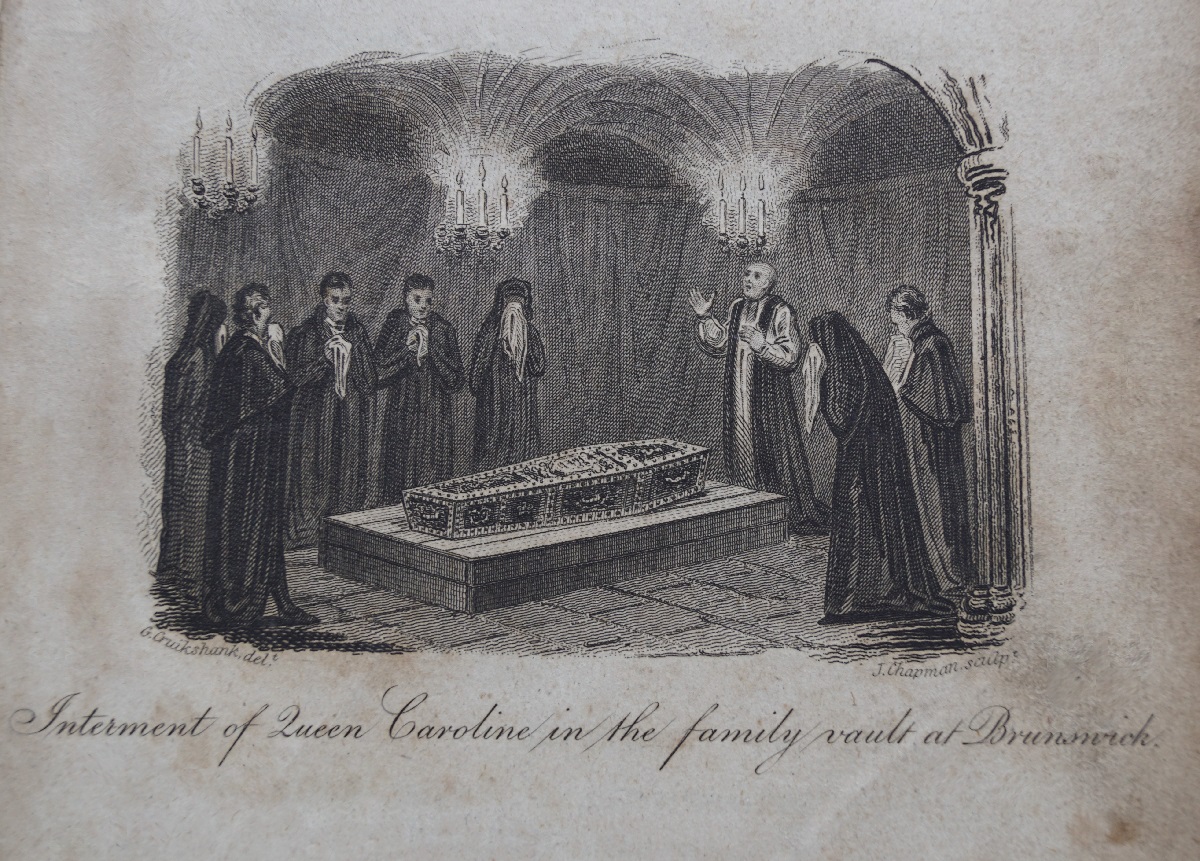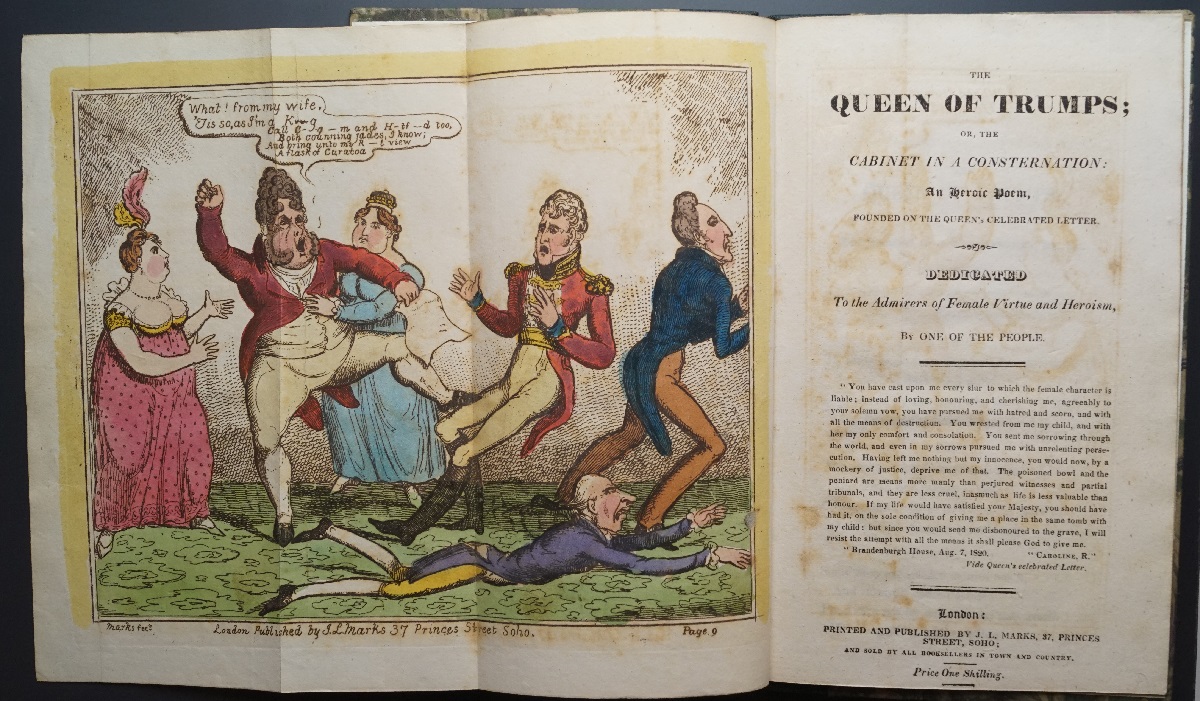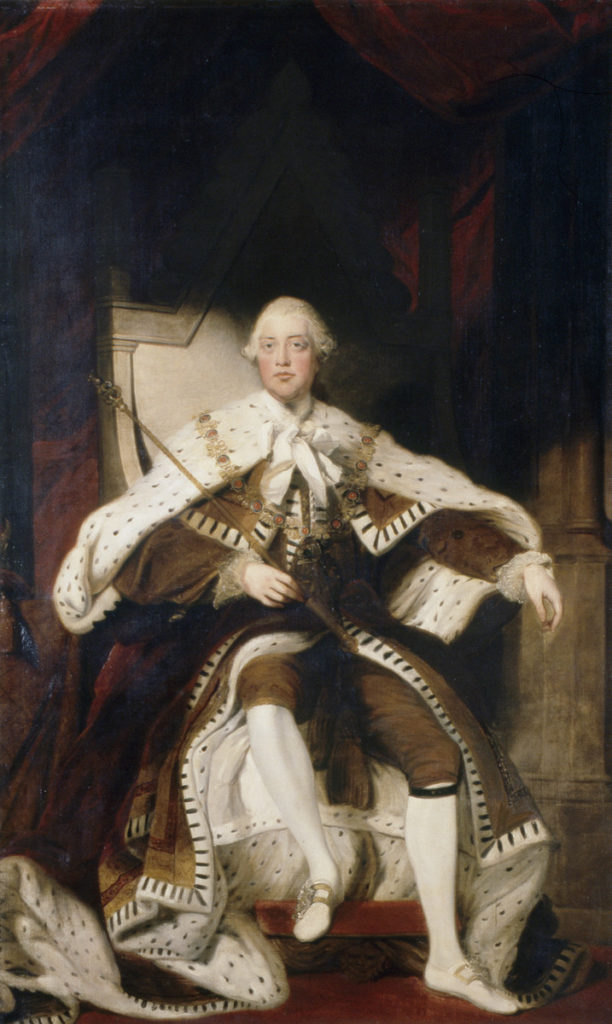Caroline of Brunswick: The Injured Queen of England

On this day (25 August) in 1821, the funeral of Queen Caroline, George’s estranged wife, took place in the cathedral of her hometown of Brunswick, Germany. Caroline had died in Hammersmith on 7 August 1821 aged 53, just three weeks after George’s coronation.

Dislike at first sight
In 1795, in order to pay his debts, George was obliged to marry his German cousin, Caroline of Brunswick (1768–1821). They had never met before they married and disliked each other at first sight. The marriage was a disaster. George later allegedly said of Caroline,
In 1797, just a few years into their marriage, Caroline said this to George when they encountered each other at court, in the presence of Lord Cholmondeley:

They separated after the birth of their only child Princess Charlotte (1796–1817) and Caroline spent much of her time in Italy. When George III died, she became nominally Queen of the United Kingdom and Hanover, and quickly returned to England to assert her rights and position.

An uncrowned Queen
George IV desperately tried to discredit and divorce Caroline before his coronation. He persuaded Parliament to remove her name from the Coronation service and to trigger a Bill of Pains and Penalties, effectively putting her on trial for adultery with the aim to remove her from the country. The public trial dragged on for months and the bill was eventually thrown out. George had to postpone his coronation by almost a year, and his reputation had suffered a major blow.
Caroline did not escape the critics and cartoonists either, who feasted on her alleged affair with the Italian Bartolomeo Pergami, but she remained popular with the public. Countless images, pamphlets, medals, figurines and printed ceramics were produced in support for her.
Caroline was not included in the coronation ceremonies. She arrived at the doors of Westminster Abbey early on the Coronation morning and demanded to be let in and crowned alongside George. She was turned away several times and eventually left defeated, with the assembled crowds still cheering her.

Funeral procession riots
Three weeks later, Caroline died.
It is not known for certain how she died, the cause seems to have been something concerning her stomach. It may have been cancer, or – for those who like a bit of conspiracy theory – she may have been poisoned by George’s supporters. Caroline certainly knew she was dying; she made a will and arrangements for her funeral. She asked to be buried in her hometown of Brunswick in Germany, with a coffin plate inscribed ‘Here lies Caroline, the Injured Queen of England’. George refused to allow the plate to be attached to his wife’s coffin.
During the coffin’s route from London to Harwich, her supporters rioted in Hyde Park. Two people were killed when stones were thrown in protest and the military fired into the crowds.
At St Peter’s Church in Colchester, where the coffin rested overnight on its way to Brunswick, an unseemly row broke out when Caroline’s executors succeeded in screwing this plate to the coffin. It was removed by order of Clarenceux King of Arms and the official plate with a Latin inscription attached.
This ‘unofficial’ silver gilt coffin plate, made by Paul Storr, has descended in the family of Stephen Lushington, one of the Queen’s executors, and is on loan to us for the duration of the exhibition A Right Royal Spectacle: The Coronation of George IV.

